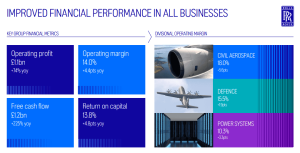Investing in an index fund is a simple way to gain exposure to a broad market with minimal effort. These funds typically track all the stocks in an index, aiming to achieve equal or better returns.
Examples include the Vanguard FTSE All-World ETF, or one of my favourites, the iShares Core S&P 500 ETF.
Many investors expound the benefits of index funds over picking individual stocks. In his best-selling book ‘A random walk down Wall Street‘, Burton Malkiel claims stock picking is often less effective than index investing.
There’s some truth to this claims. Many first-time investors with little or no knowledge of markets often underperform an index when starting out. For investors who don’t have the time or inclination to learn how to value stocks, funds may be a preferable option.
The caveat being that these investors will never beat the market or achieve life-changing gains. Their investments will never return more than the average 10-15% that most index funds achieve. In addition, they will never gain any true insight into the companies they’re invested in. They will never understand why their investments make gains during certain periods and losses during others.
For some, that’s enough. Many don’t care about global markets or the industries that drive them, happy to enjoy sufficient returns with minimal effort.
Personally, I have a vested interest (literally) in the stocks I pick. When the companies perform well, I want to know why. When certain industries struggle, I’m interested in the wider factors that played a part. I want to understand the reasons behind global market movements.
The WHY is as important to me as the potential gains (or losses). With each new lesson, the ability to improve the performance of my portfolio increases. Like riding a bicycle to work, it may take some time before I beat the bus but it’ll never happen if I don’t try.
A notable example
One stock I own that has outperformed my index funds recently is Marks and Spencer (LSE: MKS). The share price is up 54% in the past year.
The major UK food and clothing chain is a staple on the British high street. In 1998, it became the first UK firm to make a pre-tax profit of £1bn.
But it hasn’t always been a winner. In 2019, it dropped out of the FTSE 100 after years of declining profits. It lost market share to low-cost grocers like Aldi and modern online clothing stores with progressive fashions. This remains a key risk for the company, as it competes with aggressive pricing and evolving trends.
During the pandemic, things got worse. In May 2020, the share price fell below £1 — the lowest it had ever been.
In the face of a dire situation, it implemented an emergency recovery plan that included store closures, modernisation and management restructuring. It has since rejoined the FTSE 100 and is the second-best performing stock over the past two years.
However, had I bought it 30 years ago, it would have returned less than an index fund.
This emphasises the importance of identifying when a high-quality company with growth potential is selling at a low price. It provides an opportunity to outperform the index by capitalising on the undervalued price and maximising returns.
This post was originally published on Motley Fool







